Help Your Students Understand the World Around Them
From soil studies to wind energy investigations, environmental science helps students understand how to interact with the natural world. Our easy-to-use sensors support you as you help your students understand key environmental science concepts. Our lab books, such as Climate and Meteorology Experiments, include hands-on investigations that help students make connections between what they learn in your class and the real world.
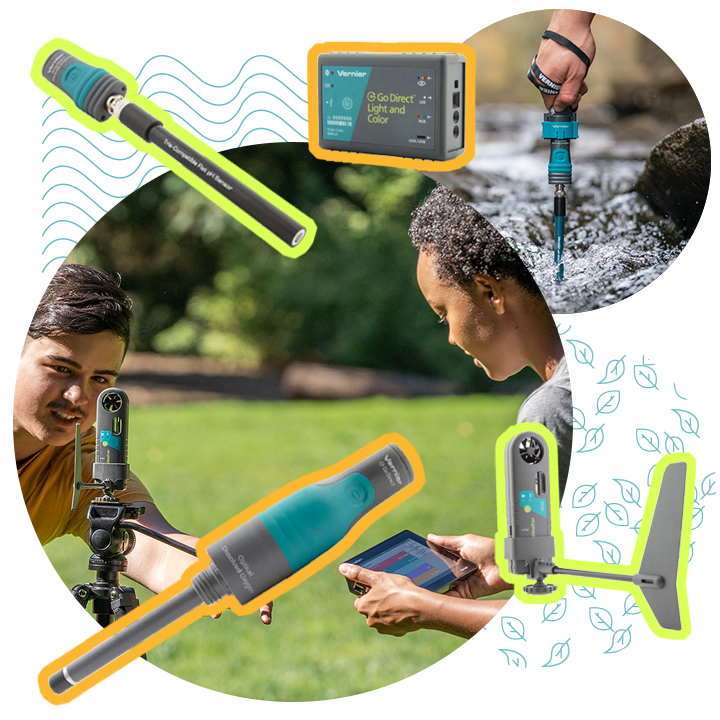
This package features the four most commonly used Go Direct sensors for teaching environmental science topics, including water quality and soil studies. Each sensor works with our Vernier Graphical Analysis® Pro app and LabQuest® 3, our easy-to-navigate, versatile data-logging solution.
What’s in the package:
- Go Direct Surface Temperature Probe
- Go Direct Tris-Compatible Flat pH Sensor
- Go Direct Conductivity Probe
- Go Direct Optical Dissolved Oxygen Probe
GDP-EV-ST $732
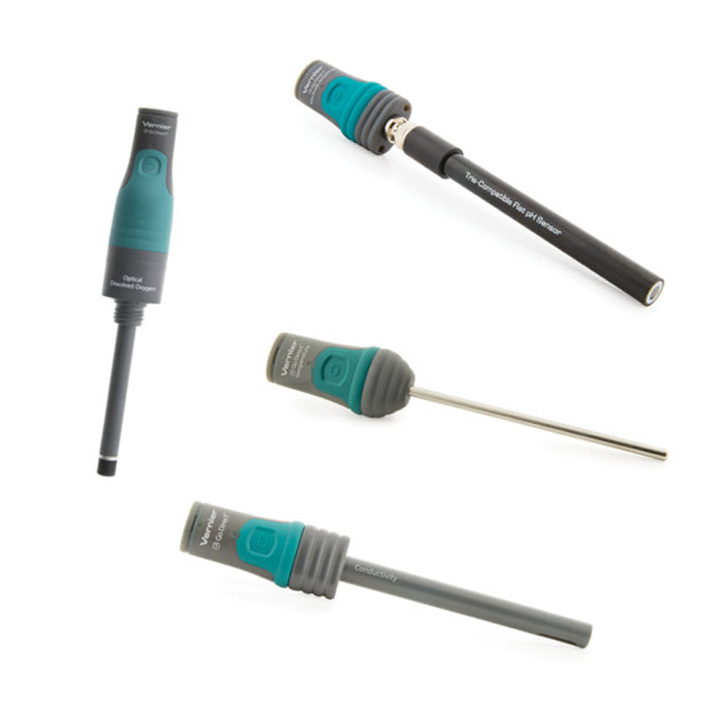
Get Started With Our Go-To Sensors for Teaching Environmental Science
Go Direct Tris-Compatible Flat pH Sensor
Easily Measure the pH of a Solution or Semisolid
The Go Direct Tris-Compatible Flat pH Sensor is a highly versatile sensor. Because the glass membrane is flat instead of a bulb, it is more durable and easier to clean—and allows for flat surface measurements and smaller sample sizes. The flat glass, double-junction design makes this sensor a good choice for environmental science. The flat glass shape also makes it useful for measuring the pH of semisolids, such as soil slurries.
GDX-FPH $139
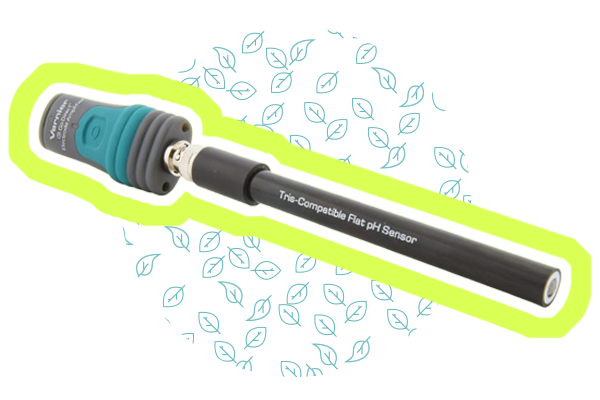
Hands-on learning opportunities include
- Measure the pH of soil.
- Measure the pH of bodies of water.
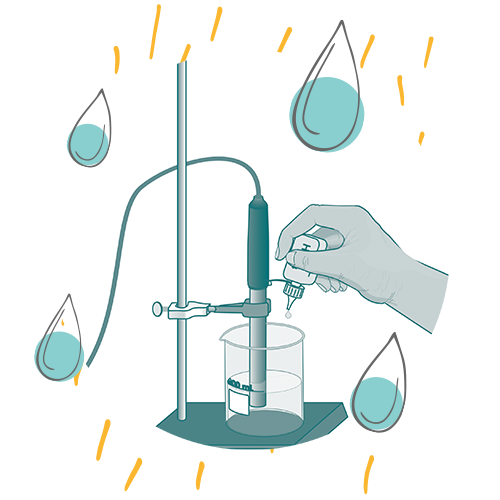
Introduce Your Students to the Science of Acid Rain with a Free Experiment
Want a preview of one of our favorite environmental science experiments? Download “The Effect of Acid Deposition on Aquatic Ecosystems” and teach your students how acid rain is formed—and why some bodies of water are more vulnerable to it.
Go Direct Optical Dissolved Oxygen Probe
Measure Dissolved Oxygen Concentration, Water Temperature, and Atmospheric Pressure
The Go Direct Optical Dissolved Oxygen Probe combines the power of multiple sensors to measure dissolved oxygen, water temperature, and atmospheric pressure. Ideal for biology, ecology, and environmental science experiments, this waterproof probe provides fast, easy, and accurate results. The Go Direct Optical Dissolved Oxygen Probe also requires no calibration, no filling solution, no warm-up time, and no stirring—making it perfect for the field or the laboratory. Plus, it is ready to sample dissolved oxygen immediately without additional setup, so more class time can be spent on the investigation.
GDX-ODO $385

Hands-on learning opportunities include
- Investigate the relationship between temperature and dissolved oxygen in water.
- Measure primary productivity or biological/biochemical oxygen demand.
- Explore the interdependence of plants and animals.
- Monitor watersheds over time.
Go Direct Surface Temperature Sensor
Perfect for Use in Air and Water
The Go Direct Surface Temperature Sensor is a flexible, quick-responding sensor that is perfect for use in air and water, making it ideal for many environmental science applications.
GDX-ST $99
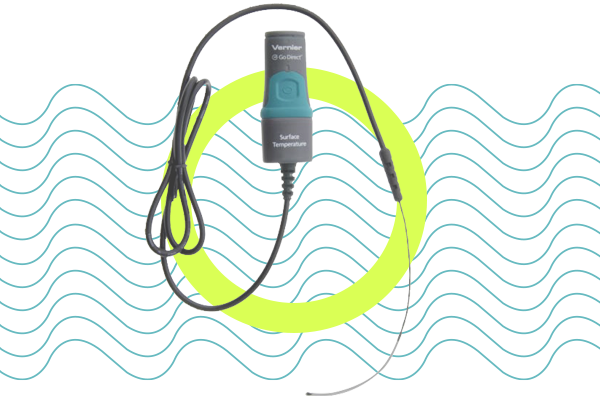
Hands-on learning opportunities include
- Explore the greenhouse effect.
- Investigate the effect of temperature on solar panel output.
- Explore passive solar heating or solar collectors.
Go Direct Weather System
Easily Monitor a Wide Variety of Environmental Factors with Just One Sensor
The Go Direct Weather System includes an affordable, wireless, handheld sensor used to measure ambient temperature, humidity, wind speed, wind chill, dew point, barometric pressure, and more. The included Go Direct Weather Vane accessory is required to report wind direction.
GDX-WTVA $164
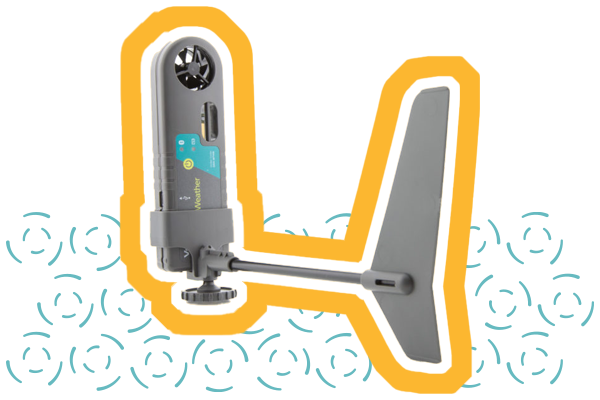
Hands-on learning opportunities include
- Measure wind speed, wind direction, and wind chill.
- Measure temperature, heat index, dew point, and relative and absolute humidity.
- Measure barometric pressure and altitude.
Go Direct Light and Color Sensor
Illuminate Concepts Across the Science Curriculum
The Go Direct Light and Color Sensor combines the power of multiple sensors to measure light intensity in the visible range and UV portions of the electromagnetic spectrum. Specifically, it consists of a visible light sensor; red, green, blue (RGB) color sensor; and UV sensor.
GDX-LC $99
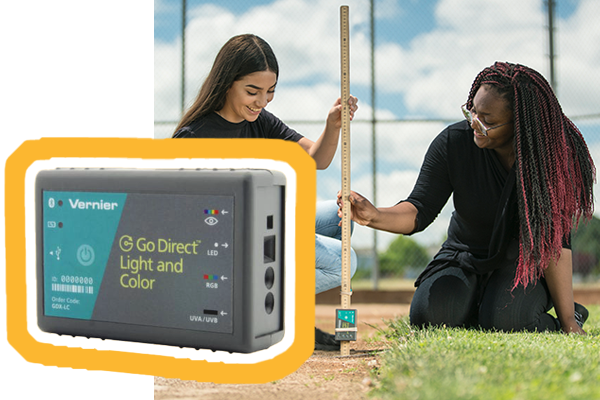
Hands-on learning opportunities include
- Explore albedo.
- Explore light intensity as a function of distance.
- Explore the reflectivity of different surfaces outside.
KidWind Basic Wind Experiment Kit
A Versatile Way for Students to Investigate Renewable Energy
Explore wind energy affordably and easily with the KidWind Basic Wind Experiment Kit. This popular kit allows young scientists to test a variety of blade designs, generate electricity (0.5–3 V range), and lift weights. It includes all the materials your students need to develop a fundamental understanding of wind power. We recommend the classroom pack, which includes materials for eight groups of two to four students.
KW-BWXC $354
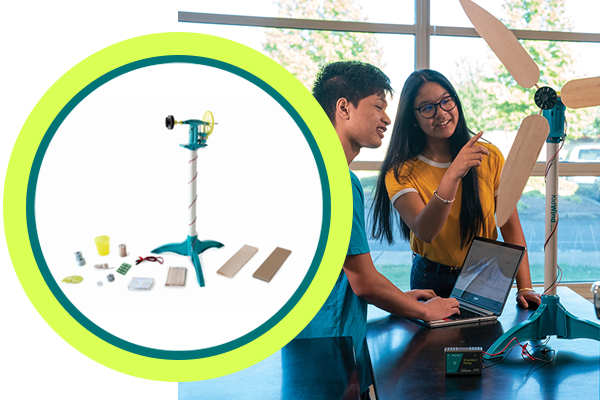
Hands-on learning opportunities include
- Engage your students as they watch power output and energy production data develop in real time.
- Inspire creativity as your students build and test prototypes, find solutions to engineering problems, and optimize designs.
- Measure voltage and current—and calculate power—without using a multimeter.
- Set up activities quickly and easily, creating more time for instruction and exploration.
Go Direct Energy Sensor
Quantify the Voltage, Current, Power, and Energy Output of Small Wind Turbines and Solar Panels
Simpler to use than a multimeter, the Go Direct Energy Sensor measures the voltage and current output of a renewable energy system. Connect a source, such as a small wind turbine or solar panel, and our Vernier Graphical Analysis app displays voltage, current, power, and energy output. For simple energy measurements, the Go Direct Energy Sensor includes a fixed load of 30 Ω. For more advanced experiments, electrical contacts are built into the sensor to connect to an external load, such as the Variable Load, a resistor on the Vernier Resistor Board, a water pump, or lights.
GDX-NRG $99
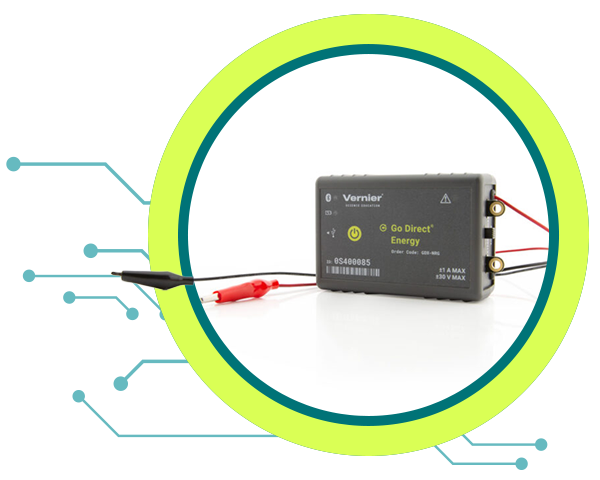
Hands-on learning opportunities include
- Investigate the electrical energy generated by a wind turbine or solar panel.
- Explore the effect of load on wind turbine or solar panel output.
- Test blade design variables and evaluate data to determine optimal blade design.
See Our Environmental Science Solutions in Action

Get Outside: Engaging Students in Environmental Science Without Leaving Campus
Have you been wondering how to get your students excited about environmental science? You don’t have to go off site to give them the opportunity to explore ecological systems, learn about data collection, and engage in scientific inquiry. Vernier biology and environmental science expert Colleen McDaniel shows you how to introduce students to testing the soil, air, and water around them using Vernier technology—all without leaving your campus!
We are scientists, educators, and your team.
As you implement data-collection technology into your teaching, we’re here to support you! Looking to learn more about our environmental science products or have questions about ordering? Reach out to our team. As a former biology and AP environmental science educator, Colleen McDaniel is here to answer all of your questions.
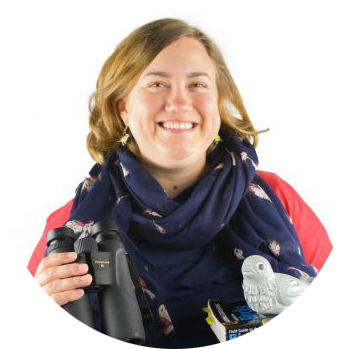
Colleen McDaniel
Biology & Environmental Science Educational Technology Specialist
"I really appreciated that Vernier is very supportive of schools. Your customer service is excellent, and we are very happy to use Vernier products in our labs."
Joy Nguyen
California State University, Monterey Bay
